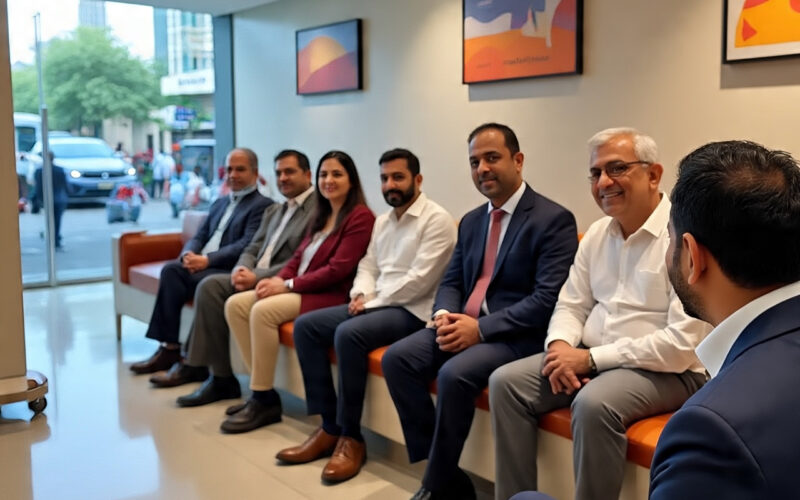#HealthcareIndia #OPDSpending #InsuranceGap #HealthInsurance #MedicalCosts #OPDCoverage #FinancialProtection #HealthcarePolicy #OutOfPocketExpenditure #InsuranceAwareness
New Delhi: India’s healthcare landscape is witnessing a significant shift with outpatient department (OPD) spending rising sharply, yet the adoption of OPD insurance coverage continues to remain restricted. Experts note that while hospitalisation insurance products have seen steady penetration in the past decade, the inclusion of OPD benefits within health policies has not kept pace, leaving individuals to shoulder a large share of their day-to-day medical costs.
According to healthcare and insurance industry specialists, the growing burden of OPD expenditure is being driven by factors such as lifestyle-related illnesses, preventive health check-ups, diagnostic testing, and rising consultation fees. However, despite the evident need, insurance adoption for OPD care remains limited due to structural challenges, pricing constraints, and lack of awareness among policyholders.
Rising OPD Costs: A Growing Concern
Out-of-pocket expenditure (OOPE) continues to dominate India’s healthcare system, accounting for nearly 48% of total health spending, as per recent government and industry data. A significant portion of this spending comes from OPD services—consultations, diagnostics, medicines, and minor procedures that do not require hospital admission.
Healthcare economists point out that OPD costs often represent recurring expenses, which, for many families, are higher over time than one-off hospitalisation bills. A middle-class household, for instance, may spend between ₹15,000 and ₹50,000 annually on OPD consultations and diagnostics, a sum that is not covered by most basic health insurance plans.
“Rising OPD spending reflects a transition in healthcare demand. People are seeking more preventive and primary care services, but the financial protection layer through insurance is missing,” says Dr. Rajiv Kumar, a health policy researcher.
Why OPD Insurance Lags Behind
Despite the clear need, insurers have struggled to design and distribute OPD-inclusive products at scale. Industry experts identify several reasons for this gap:
-
High Premiums: Adding OPD coverage significantly raises premiums, making policies less attractive to price-sensitive customers.
-
High Frequency of Claims: Unlike hospitalisation claims that are relatively infrequent, OPD claims occur regularly, increasing the risk for insurers and making actuarial pricing complex.
-
Administrative Burden: Processing numerous small-value claims from consultations and medicines increases operational costs for insurers.
-
Awareness Deficit: A large section of consumers remain unaware that OPD insurance products exist or do not fully understand the benefits of opting for them.
-
Distribution Challenges: Agents and intermediaries often prefer selling simpler hospitalisation-based policies, as they are easier to explain and quicker to close.
Limited Adoption Despite Product Innovation
In recent years, several insurers have experimented with OPD-inclusive health covers and wellness-linked products, bundling benefits such as teleconsultations, diagnostic discounts, and annual check-ups. Some digital-first insurers have introduced app-based claims processes for OPD services, aiming to make them more seamless.
Yet, adoption has remained limited. A 2024 survey by a leading insurance broker revealed that less than 15% of urban policyholders had any form of OPD coverage, while in rural areas, penetration was negligible.
“Customers often hesitate when they see the jump in premium. For example, a ₹5-lakh hospitalisation policy may cost ₹12,000 annually, but adding OPD benefits can push it to ₹20,000. That gap makes many families drop the OPD component,” explains Dinesh Mehta, an insurance consultant.
The Corporate Push
Corporate employers have been among the few active promoters of OPD coverage. Several large organisations, particularly in the IT and financial services sectors, now offer OPD benefits as part of their group health insurance schemes. These often include reimbursements for doctor visits, pharmacy spends, and diagnostic tests.
However, this benefit remains concentrated among formal-sector employees, who represent only a fraction of India’s total workforce. The vast majority of informal-sector workers and self-employed individuals still lack access to such coverage.
Experts Call for Policy Innovation
Industry voices argue that a stronger push is needed from both insurers and policymakers to make OPD insurance viable. Suggested measures include:
-
Micro-insurance models: Low-ticket OPD plans targeting specific needs such as dental, eye care, or chronic disease management.
-
Technology-driven claims: Use of digital health platforms, e-pharmacy tie-ups, and cashless OPD networks to reduce administrative overhead.
-
Awareness campaigns: Educating consumers about the value of OPD protection, especially in urban middle-class segments where healthcare costs are rising fastest.
-
Tax incentives: Expanding Section 80D benefits to encourage adoption of OPD-inclusive policies.
“OPD cover should not be seen as a luxury. With the rise in lifestyle diseases and preventive healthcare demand, it is becoming a necessity. Insurers and regulators need to find a middle ground where premiums remain affordable while consumers get meaningful protection,” notes Shweta Arora, a health insurance analyst.
The Road Ahead
The consensus among experts is that India’s healthcare financing model must evolve to address the growing OPD burden. While hospitalisation-focused insurance remains critical, ignoring outpatient care risks undermining financial protection for households.
Globally, countries with mature insurance ecosystems such as the US, Japan, and many in Europe, include OPD services in standard health plans, often coupled with co-payments to manage costs. For India, adapting such models may be challenging but necessary in the long run.
Until then, rising OPD costs will continue to weigh on Indian families, especially in urban centres where medical inflation is outpacing income growth. The limited reach of OPD insurance leaves a protection gap that could widen further unless structural reforms and product innovations bridge it.
🔑 Hashtags
#HealthcareIndia #OPDSpending #InsuranceGap #HealthInsurance #MedicalCosts #OPDCoverage #FinancialProtection #HealthcarePolicy #OutOfPocketExpenditure #InsuranceAwareness

